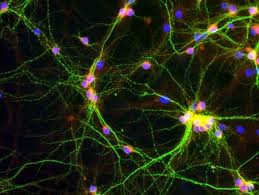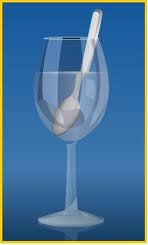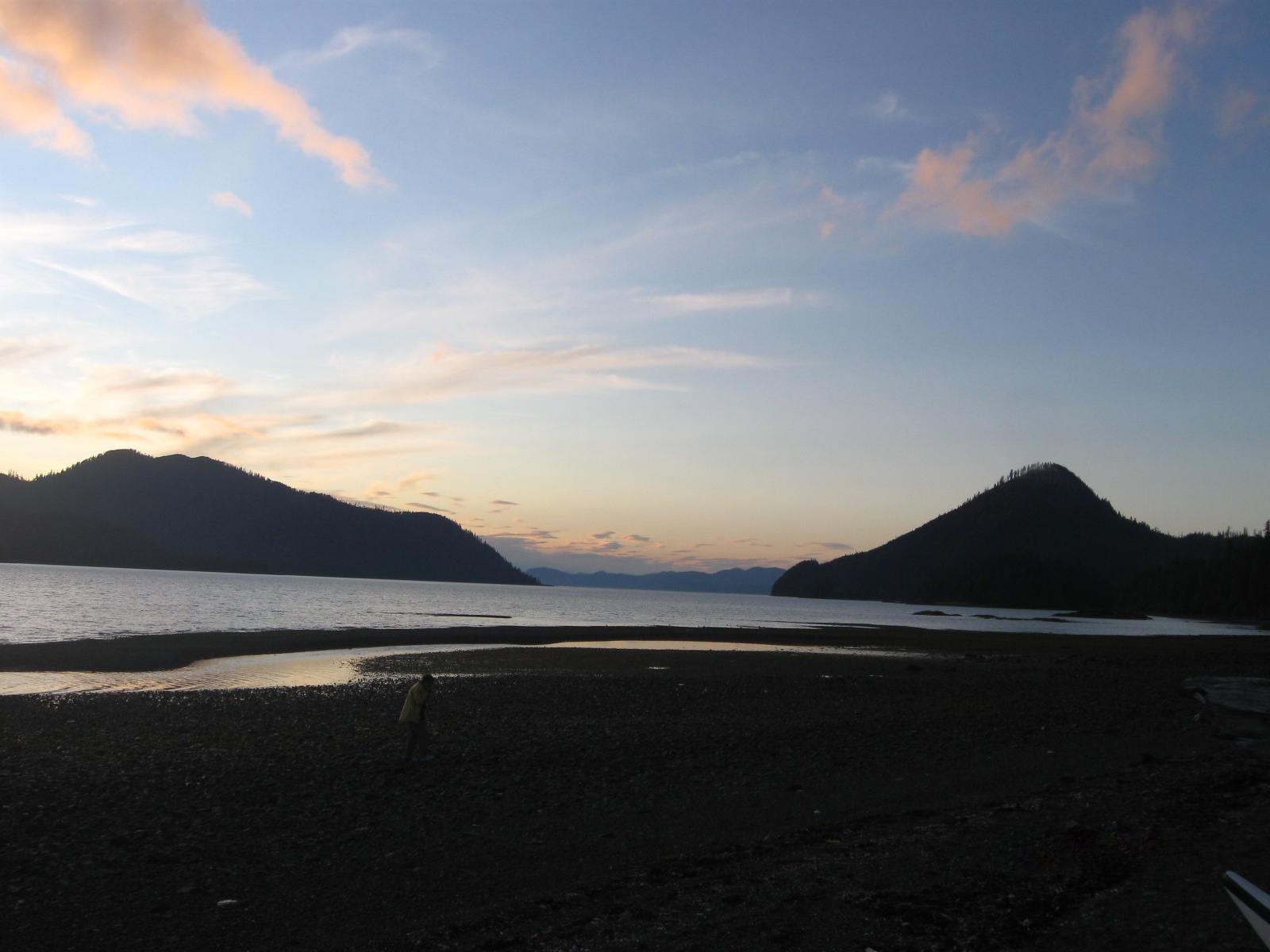 I have been moved now out of Emergency, and up to the fifth floor, the Neurological Ward. It’s still Saturday, the day of my stroke, I settled in to my bed and to the strict bed rest. I was allowed to sit up only to eat and to use the bedpan. (It’s cool the way you can adjust the upper body, and raise or lower your knees. You can basically take variations on the shape of Cassiopeia as you’re inclined!)
I have been moved now out of Emergency, and up to the fifth floor, the Neurological Ward. It’s still Saturday, the day of my stroke, I settled in to my bed and to the strict bed rest. I was allowed to sit up only to eat and to use the bedpan. (It’s cool the way you can adjust the upper body, and raise or lower your knees. You can basically take variations on the shape of Cassiopeia as you’re inclined!)
I was still hooked up to my IV, and now they also hooked me up to the vital signs monitor, which made an irritating noise –and it was interesting to explore the options: get irritated, reframe it into some sort of white noise soundscape, tune it out…I tried them all. At night there were, thank goodness, earplugs. Luckily this only lasted one night.
Every couple of hours the floor staff came to check on me. They take your ‘vitals’, as they say, heart rate, pulse, and blood pressure, then run through all the stroke questions and diagnostics… What’s your name, Where are you, Hold out both arms with your eyes closed, etc. I forgot to say that they also shine a flashlight in your eyes to see if they dilate properly.
Mike had left to do errands, get some supplementary food. The food was really pretty dreadful. (I won’t spend time on this, Suffice it to say that it’s pretty crazy how a place that’s supposed to be about healing serves food that does the opposite of promoting health.) But I was lucky. With the fresh salads and smoothies that Mike and Lisl brought daily, it worked out quite well. In two days I was up and about, dressed in street clothes, and we stopped by the bakery on the ground floor which helped too. But I am getting ahead of myself.
Mike left and I slept. I expect some of you have heard Jill Bolte Taylor’s TED talk. You might have read her book, My Stroke of Insight. I highly recommend both. Jill says that sleep is essential in recovering from a stroke. I slept soundly and it was wonderful. And I continue to enjoy short naps most days, now three weeks later. A friend told me yesterday that the recovery process lasts well beyond the externals, and to honor that. That made sense, and helps me relax into the flow at times when I notice myself starting to rev up. Interestingly Mike had just picked up a remaindered copy of the Taylor’s book and was reading it the week of my stroke!
Hers was a massive, devastating, debilitating hemorrhagic stroke that took a full eight years to recover, multiple orders of magnitude different from mine. Yet her reporting of the event, and in particular the process of her complete recovery and healing was extremely illuminating, and I continue to benefit from her insights and information. Taylor is a brain scientist, and her observations about the different roles, functions, and capacities of the right and left brain, (wholeness of experience vs. linearity and logic, connection vs. separation…) and the choices we have when those pathways are interrupted (we don’t have to rebuild the pathways exactly as they were — we can reprogram the useful bits and drop some of the junk…), are nothing short of revolutionary. I also welcome her celebration of the miracles that our bodies and their functioning manifest each moment. Whether or not you have had any intimacy with strokes or stroke patients, her reporting of current scientific understandings about the way the brain works, coupled with her experience of the stroke and her recovery, are fascinating, relevant both to the way we heal and to the way we live our lives.
As I woke, Lisl, my daughter, who had arrived from Bellingham with her family, was there to greet me. We shared some tears and some happiness, and it was lovely time together. At supper, when I could sit up briefly, and Mike was back, we started to assess the damage. Face and speech were as though nothing had happened, and it was only ten hours since the event. Miracle. My left arm and grip strength were greatly improved, but far from normal. The arm would not go where I wanted it to. It felt and looked a bit like a robot’s, and in some way seemed as though it didn’t belong to me. I could not open or close my hand; it moved as a single lump — I could not move the fingers separately at all. It was most interesting to try to touch my thumb to each of the fingers one by one — index, middle, ring, pinkie. It wouldn’t work. I exerted some effort and could see the improvement almost minute to minute, but still it went very, very slowly. The next day Lisl asked me what it was like. As part of me watched my hand awkwardly trying to do simple jobs, I realized that it looked and felt a bit like a chimpanzee. I said that aloud and we laughed. Not at chimps, but at me!
Try it now. Touch each finger to your thumb, one after the other. Easy, eh? Maybe when you do that in your life sometime, you might just take a moment to appreciate how incredible our brains and bodies are; the brain has taught our bodies to do countless tasks and we don’t have the slightest notion of all that is involved. We take so much for granted. One of the gifts of my lucky stroke was that I do a little less of that now, even now that my hand and arm are fully functional again.
But on Saturday, and even still on Sunday, I couldn’t do this simple finger-touching exercise. Nor could I grasp or pick anything up, for example a spoon, or my earplugs, or the aspirin. Trying to pick something up was very ungainly and the object would usually fall down. (FYI: Aspirin is a mild blood thinner and I had been taking a baby aspirin, 81 mg,, daily for some time. That didn’t prevent my stroke, but maybe it helped the clot flow on through… who knows. Someone in our building who had a stroke a few months ago has a mantra, for himself, and anyone he meets: “Take baby aspirin each day.” You might want to ask your doctor whether it makes sense for you.)
The next day when I was allowed to get up and go to the washroom, it was very interesting to reach for the faucet in the sink. It was quite fascinating, actually. How can I describe it?
 It was kind of like my arm was moving through viscous matter, and the perspective seemed distorted, as happens when light is refracted though water. I couldn’t just reach out and touch the faucet directly, things were sort of wavy, a little like I was drunk :-). Only I knew I was thinking clearly. The arm and hand just didn’t work right.
It was kind of like my arm was moving through viscous matter, and the perspective seemed distorted, as happens when light is refracted though water. I couldn’t just reach out and touch the faucet directly, things were sort of wavy, a little like I was drunk :-). Only I knew I was thinking clearly. The arm and hand just didn’t work right.
The two CT scans taken immediately after arrival showed no bleeding or noticeable clots. (A good thing.) But the MRI that was taken on Monday, two days later, showed that there had been damage. (Good too in that there was only this stroke to be seen, no previous events.) A part of my brain was dead. No pathways there anymore. I believe it is a small section of the right frontal cortex. The magic is that immediately my brain started to find new pathways. How incredible is that!! As I tried to touch my fingers to each other, reach for the faucet, pick up the earplugs, I could almost feel the pathways forming, reaching out, connecting dots, finding and firing different synapses to develop new ways to do jobs that could no longer be done in the usual manner.
It seems so magical, yet so very ordinary and earthy. Eminently practical, matter of fact, and at the same time, absolutely miraculous.
And so it was on our kayak trip 🙂
(To be continued)
Jill Schroder is the author of BECOMING: Journeying Toward Authenticity. Check the website for a sample chapter, or see the reviews to get a flavor for the volume



6 comments
Suzanna says:
Aug 30, 2011
Amazing, Jill…thanks for letting us all take part in this journey with you…
Jill Schroder says:
Aug 30, 2011
My pleasure, Suzanna. It’s been gratifying to hear from people who are finding it useful and insightful… That’s wonderful!
Cinda Pearlman says:
Aug 31, 2011
What you are describing here is an example of the brain’s “plasticity”, its ability to change and adapt, contrary to the earlier notion of a fixed entity with a certain number of neurons which, when incapacitated, die and kill off part of the brain. Period. Your remaining
sensory and motor neurons know better, and yes, it truly is miraculous. I’m hoping that the same proves true for Dan (my husband) as he combats chronic pain, another neurological impairment which the brain may be able to conquer through its “plasticity”.
Great to follow this chapter in your life Jill. Lots for all of us to learn! Thanks.
Cinda
Sally Oakes Lauve says:
Sep 1, 2011
Dear Jill,
To read your descriptions of the stroke and its aftermath is to marvel at your ability to use your great analytical and literary skills to master an event which for many people must seem like an out of control experience. I do admire your fortitude and wish you an ongoing recovery.
Sally
Jill Schroder says:
Sep 4, 2011
Dear Sally, My heart warmed as I read your comment, first that you’re following along, and then, at the thrust of your observations. Hugs, blessings, and glowing gratitude, for life, for connection, healing, and friends like you 🙂
Joan says:
Sep 1, 2011
Deep gratitude for both your wonderful recovery and your equally wonderful sharing, Jill. I was at Asilomar when I heard your news. Didn’t have access to my computer there, so was informed of your stroke by Keith Barker and John Davis. It seemed from that news that you were doing well, and I’m glad to hear that that is the case. As you describe, there’s lots of learning and deep appreciation for the complexities of our vulnerable systems…..We do take our bodies so for granted and for you and for me, they have served us so very well….Many blessings on your continued recovery. Much love, Joan